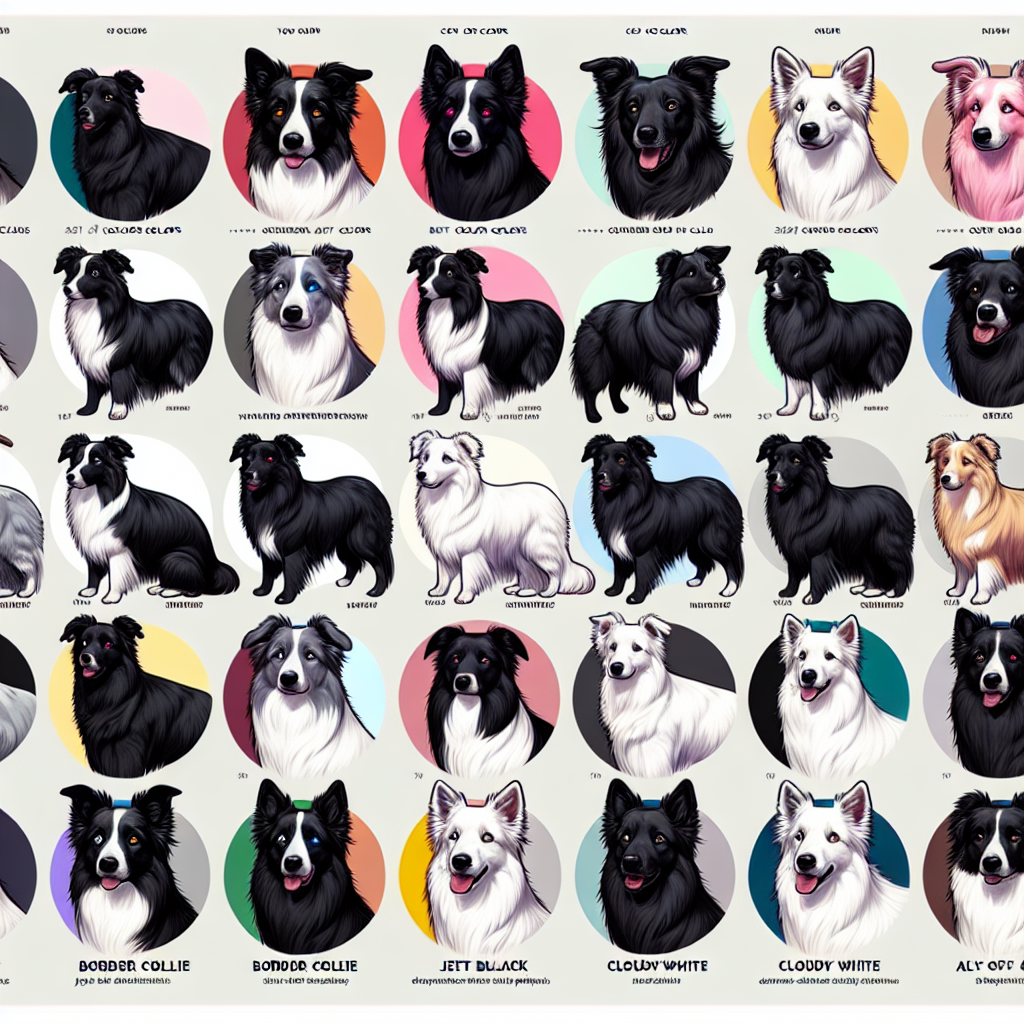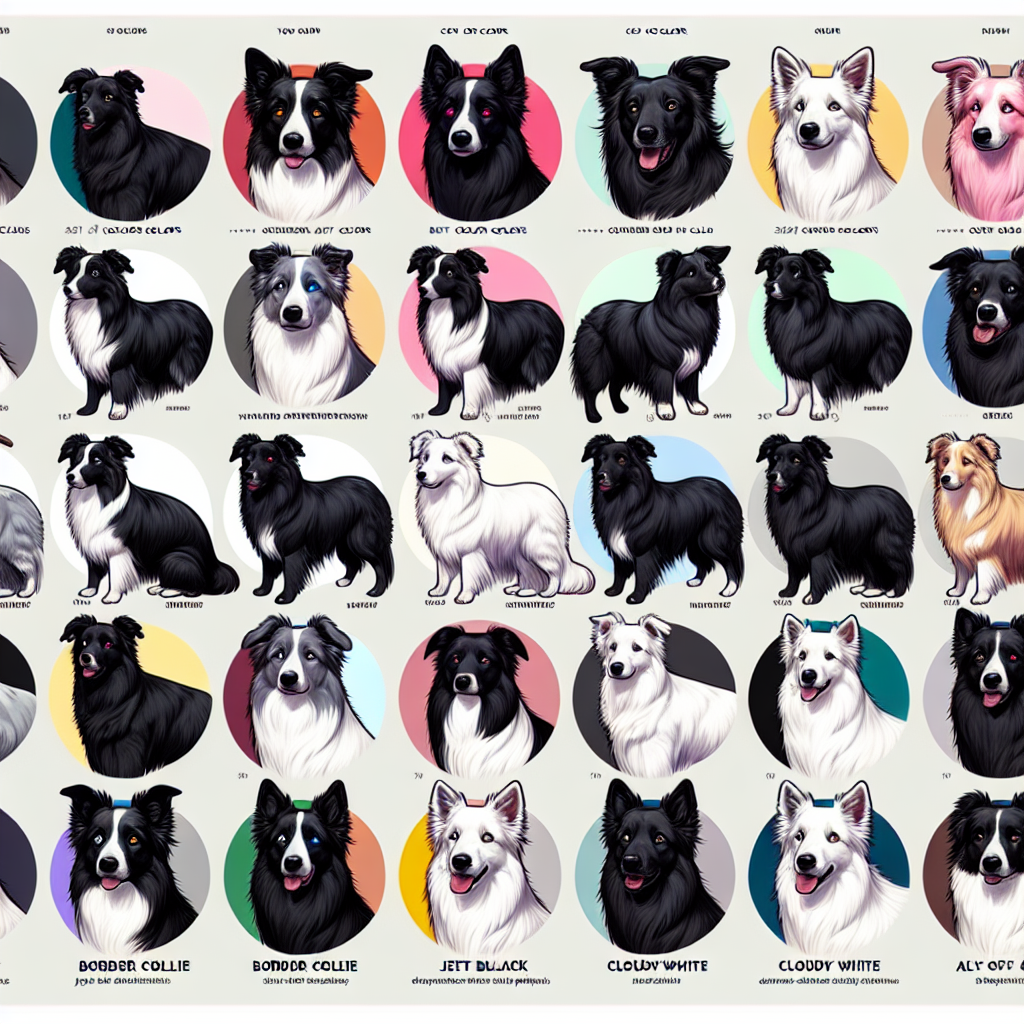Have you ever wondered about the different coat colors of Border Collies? This article will provide you with a concise yet comprehensive understanding of the various coat colors found in this intelligent and vibrant breed. From classic black and white to striking red or blue merle patterns, you’ll discover the fascinating range of hues that adorn these energetic and loyal dogs. So, buckle up and get ready to explore the world of Border Collie coat colors!
Understanding Border Collie Coat Colors

Introduction to Border Collie Coat Colors
Border Collies are well-known for their intelligence, agility, and herding abilities. However, another distinguishing feature of this remarkable breed is their diverse coat colors. Border Collie coat colors can vary widely, ranging from common colors such as black and white to rare and unique shades like lilac and slate. Understanding the different coat colors and patterns is not only fascinating but also important for breeders, owners, and enthusiasts alike.
Common Coat Colors
The most commonly seen coat colors in Border Collies are black and white, red and white, tricolor, blue merle, and sable. The black and white coat color is a classic combination, with a stark contrast between the dark black patches and the bright white sections. Red and white Border Collies have a warm reddish hue that adds a touch of vibrancy to their appearance. Tricolor Border Collies, also known as black tris, feature a combination of black, white, and tan markings. Blue merle Border Collies have a striking coat pattern that includes a mottled or marbled appearance of gray and black patches on a lighter background. Sable Border Collies have a spectrum of colors ranging from light tan to deep mahogany, giving them a distinctive and rich appearance.
Rare Coat Colors
While common coat colors dominate the Border Collie population, there are also several rare coat colors that are less frequently seen. These include lilac and white, isabella and white, chocolate and white, and slate and white. Lilac and white Border Collies have a unique dilute coloration, resulting in a pale lavender or silver-toned coat. Isabella and white Border Collies display a beautiful light brown or fawn coloration that exudes elegance. Chocolate and white Border Collies have a rich chocolate brown coat that is both eye-catching and uncommon. Slate and white Border Collies have a distinct bluish-gray coat color that sets them apart from the more commonly seen colors.
Color Patterns
In addition to a range of coat colors, Border Collies can also have various color patterns. The most common color patterns include solid, bicolor, tricolor with white markings, merle, and piebald. Solid Border Collies have a consistent color throughout their coat without any markings or variations. Bicolor Border Collies have a base color that is accompanied by white markings, usually on the face, chest, and paws. Tricolor Border Collies have a combination of three distinct colors, which are often seen in traditional herding dogs. Merle Border Collies have a marbled or speckled pattern that creates a mesmerizing effect on their coat. Piebald Border Collies have large areas of white on their coat, interspersed with patches of another color.

Factors Influencing Coat Colors
Several factors can influence the coat colors and patterns seen in Border Collies. Inheritance plays a significant role, as coat color traits are passed down from the parents to their offspring. Genetic mutations can also occur, resulting in unique coat colors and patterns that are not commonly observed. Breeding strategies employed by breeders can further affect coat colors, as deliberate pairings can aim to produce specific color variations. Additionally, environmental factors, such as exposure to sunlight and variations in temperature, can impact the development and appearance of a Border Collie’s coat.
Understanding Genetics Behind Coat Colors
To truly grasp the nuances of Border Collie coat colors, it is essential to delve into the genetics that underlie these traits. Genetic codes determine the production of pigments responsible for coat colors, and different genes contribute to the various coat color variations seen in the breed. Understanding the inheritance patterns and the interaction between different genes is crucial in predicting and breeding for specific coat colors. Genetic testing can also provide valuable insights into the coat color composition of Border Collies, aiding breeders in making informed decisions.
Coat Color Changes with Age
A Border Collie’s coat colors can undergo intriguing changes as the dog progresses through different stages of life. During the puppy stage, Border Collies often have a gentler version of their adult coat colors, with lighter hues and less defined patterns. As they reach adolescence, the coat colors may darken or intensify, giving a glimpse of the final appearance they will have in adulthood. Adult coat development solidifies the coat colors and patterns, showcasing the unique beauty of each individual Border Collie.
Coat Color Health Considerations
Coat colors can also have an impact on a Border Collie’s overall health and well-being. Some coat colors, especially lighter ones, can make a dog more sensitive to the harmful effects of the sun’s UV rays. Consequently, owners of Border Collies with lighter-colored coats should take extra precautions to protect their pets from sunburn and skin damage. Certain coat colors may also be more prone to specific skin conditions, such as allergies or dermatitis. Additionally, eye and ear issues, such as deafness associated with certain coat colors, may need to be monitored more closely in certain individuals.
Grooming Tips for Different Coat Colors
Different coat colors may require specific grooming techniques and maintenance. Border Collies with longer coats, such as those with a more significant white presence, may be more prone to matting and may need regular brushing to keep their fur in optimal condition. Coat colors that fade or lighten with exposure to sunlight may benefit from protective products or limited sun exposure. Proper grooming not only enhances the appearance of a Border Collie but also ensures the health and comfort of their coat.
Preserving Coat Colors in Border Collies
Preserving and appreciating coat colors in Border Collies is an essential aspect of responsible breeding and ownership. Breeders play a crucial role in maintaining the diverse array of coat colors, ensuring the genetic diversity necessary to produce healthy and visually captivating Border Collies. Avoiding color-related health issues requires careful selection and understanding of potential genetic risks. Proper grooming practices are vital for maintaining the integrity and vibrancy of coat colors. Ultimately, accepting and cherishing all coat colors promote inclusivity and appreciation for the remarkable beauty that Border Collies possess.
In conclusion, understanding Border Collie coat colors is not only interesting but also crucial for breeders, owners, and enthusiasts alike. The wide range of coat colors, patterns, and genetic factors contribute to the unique appearance and individuality of each Border Collie. By appreciating and preserving the diversity of coat colors, we can further enhance our understanding and admiration for this remarkable breed.
